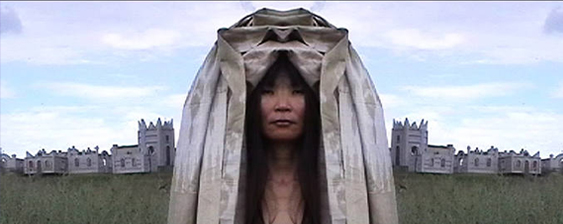Almagul Menlibayeva
Russia conquered Kazakhstan in the 18th century. By 1936, that vast Middle Asian country had become a Soviet republic. This means that for most of the 20th century indigenous Kazakhstani culture was de-emphasized in favor of Soviet culture. Russian became the country’s official language and communism the official system. The loaded term cultural genocide has been employed. This much is certain: for several decades a set of cultures was forcibly repressed in favor of a foreign ideology. Call it what you will; the scars are still there.
Kazakhstan became independent in 1991. Discarding the Soviet ways and going back to Kazakhstani culture seemed like the natural next step. The problem is that Soviet immigration policies shifted the country’s ethnic make up. Nowadays ethnic Kazakhs make up only about 60% of the population. Russians, Uzbeks, Ukrainian and others make up the rest. Russian is spoken by over 90% of the people and has remained the country’s intercultural language. Finding a common Kazakh mythology for citizens to gather around seems too intricate, to say the least. And yet, Almagul Menlibayeva is giving it a try. Why? Performance artists have a penchant for herculean acts. Also, her quest fulfills a personal need.
Here’s what she said about self-identity during a recent interview:
“People born in the Soviet Union, we don’t know our past. I learned traditions when I went to my grandmother’s village. But in the village you notice only the rituals and everyday behavior. The intellectual information, you cannot get because, it’s very sad to say, but during collectivization, during the 30s, there were a lot of people who died, moved, and ran away from the communists. [It was hard] to get information about who you are, from where you came and why. There was a big gap. I used to say: I’m a modern person, but who am I?”
Here the idea of atavism emerges. Atavism is the recurrence in a plant or an animal of certain primitive characteristics that were present in an ancestor but have not occurred in intermediate generations; it is a reversion to a former or more primitive type. In her art, Menlibayeva continuously invokes her ancient self. She looks for it around the Kazakh steppe. This is a huge grassy area that first was populated by Turkic nomads before the Arabs arrived in the 8th century (Mongols joined in during the 13th century). Now, it would be wrong to pretend to understand who these Islamic Turkic and Mongol nomads really are. It suffices to know that Tengrism—a Central Asian religion characterized by shamanism, animism, totemism, polytheism and ancestor worship—was integral in the development of Central Asian nomadic culture.
“Who am I?” Almagul Menlibayeva asks.
She was born in 1969 in Almaty, Kazakhstan’s largest city, and attended Academy of Art and Theater of Albaty. At first she was a painter but eventually found her way to performance art, photography, and video art. She’s a fashionable dark haired woman, who wears thick-framed glasses, speaks English, and calls herself a nomad—not that she gallops through the steppes on horseback looking for animals to sacrifice. She works the Albaty, Berlin, and New York gallery circuits. She’s not a steppe nomad, but then again—here is where her atavism crystalizes. Her rituals evoke the nomadic world. And in her best work, she seems to stand in the middle of her own dreams, changed.
It’s important to understand, however, that instead of inserting herself into an ancient mythological realm, Menlibayeva’s art brings the mythological world out into the present (that is, globalization and post-modernity). Menlibayeva videos and photos display strange images of goddesses that could have been taken from an Alejandro Jodorowski movie, but they also display editing that mirrors the MTV music video aesthetic. The sound effects could have come out of any Hollywood horror movie. Her long legged models would not be out of place in Vogue. In terms of artistic language, Menlibayeva is as accessible as, to use two extreme examples, Cindy Sherman and David LaChapelle. But that’s just the bait. Almagul Menlibayeva’s metaphysics are destined to remain impenetrable.
This serves a purpose. Traditionally, Western artists have been attracted to Orientalism for various reasons, but it has mostly come down to a search for freshness. That’s fine, but unnaturalness is always a danger for those who are overly eager in their foreign expeditions. The opposite is also true. Non-Western art can be either unapproachable or too self-consciously derivative of Western forms. Menlibayeva has devised a cunning system. Her tools may be Western, but she reaches down and digs underneath her own feet. The outcome is rare to the point of implausibility uncontrived exotic art.
-Patricio Maya


